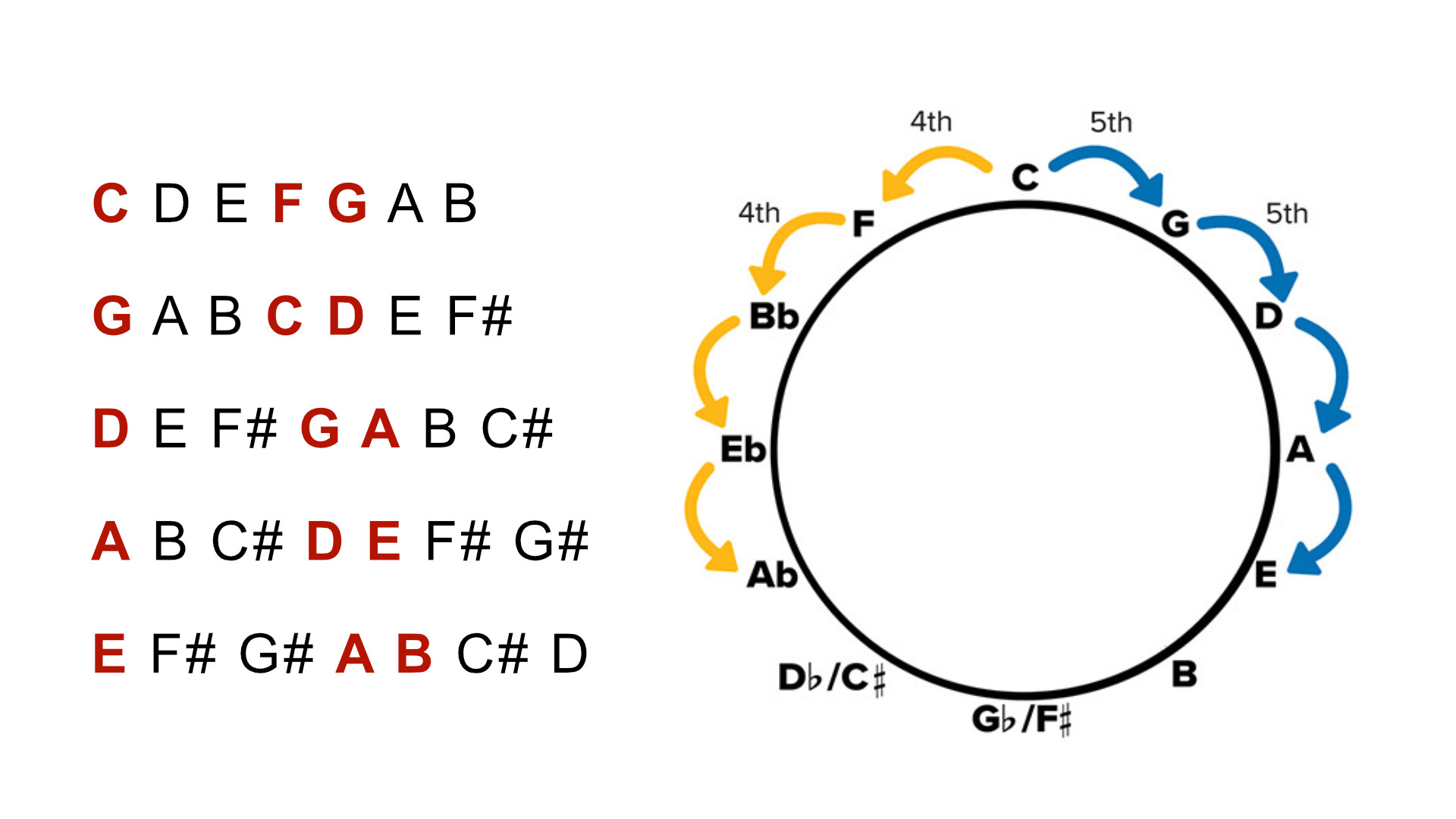Are you just starting your guitar journey and feeling lost in a sea of chords? Many beginners grapple with understanding how chords relate to each other and how to use them to play actual songs. I’m Tomas from Real Guitar Success, and I often get asked about the best way for beginners to approach learning guitar chords. One question that comes up frequently is: “What are the most common keys for guitar players, and why are they important?”
The answer lies in understanding the Key Of Guitar. Learning about keys is fundamental because it provides a framework for understanding which chords work well together. This knowledge is essential for choosing the right chords to learn first and, more importantly, for applying them in a musical context. By focusing on guitar chords within keys, you gain a clear roadmap to playing songs and sounding great right from the start.
Why Starting with Guitar Chords in Keys is Crucial
When I first started learning guitar, I made the mistake of picking up chords randomly, based on which ones seemed easiest to finger. This approach, I soon realized, was inefficient and didn’t translate into actual music-making. Simply knowing individual chords is not enough. Beginners need to learn how to use these chords in context, understanding their relationship to one another. Learning chords within the framework of a key allows you to practice chord transitions smoothly and play along with other musicians, all within a cohesive musical environment.
What Exactly is a Guitar Key?
In musical terms, a key of guitar is essentially a family of chords that harmonically complement each other. Think of it as a curated set of chords that are commonly used together in songs. For beginner guitarists, focusing on keys offers several advantages:
- Contextual Learning: Keys provide context for your chord practice. Instead of learning isolated chords, you learn them as part of a functional group, making it easier to understand how they sound together and how they are used in music.
- Practical Application: Learning keys immediately opens doors to playing countless songs. Most popular music is built around specific keys, so understanding keys means you can start playing your favorite tunes sooner.
- Avoid Overwhelm: The sheer number of guitar chords can be daunting for beginners. Keys narrow down your focus to a manageable set of chords, preventing you from feeling overwhelmed and allowing you to progress more quickly.
- Musical Understanding: Learning keys is not just about memorizing chords; it’s about developing a fundamental understanding of music theory and harmony. This understanding will be invaluable as you progress and explore more complex musical concepts.
In essence, guitar keys provide the context and structure you need to learn chords effectively, showing you how they relate to each other and how they create the foundation for songs.
Discovering the Most Common Guitar Keys
 Common Guitar Keys for Beginners
Common Guitar Keys for Beginners
As illustrated in the image above, some keys are far more prevalent in guitar music than others. The most common guitar keys for beginners to learn are C, G, D, A, and E. Remarkably, approximately 80% of popular songs are written in these five keys. Mastering these keys will give you access to a vast repertoire of music.
Each of these keys contains a core group of chords that naturally sound good together. Crucially for beginners, these keys often allow you to play many simple songs without relying heavily on barre chords, which can be a significant hurdle for new players. Focusing on these keys initially helps build confidence and momentum in your guitar journey.
Which Guitar Key Should You Learn First?
While the key of C is often cited as the most common key in music generally, it presents a slight challenge for absolute beginners on guitar. The key of C prominently features the F chord, which is typically played as a barre chord. Barre chords require more finger strength and dexterity, and can be frustrating for those just starting out.
Therefore, I often recommend that beginners start with the key of G. The key of G utilizes the fundamental chords G, C, and D, none of which are barre chords. These are all open chords, meaning they utilize open strings and are generally easier to finger and play cleanly. Once you’ve gained some experience and developed more finger strength, you can comfortably circle back to the key of C and tackle the F barre chord.
Unlocking the Circle of Fifths
To the right in the image, you’ll see a diagram called the Circle of Fifths. While it might sound intimidating, the Circle of Fifths is actually a helpful tool for understanding and remembering the relationships between keys, especially the most common ones.
The Circle of Fifths is arranged in a clockwise manner, starting at the top with C. As you move clockwise around the circle, each subsequent key is a fifth interval away from the previous one. This “fifth” relationship is a fundamental concept in music theory, but for now, simply understanding the order is beneficial. Following the circle clockwise from C, we arrive at G, then D, then A, and finally E – the five most common guitar keys we’ve discussed. This visual representation can aid in memorizing these key relationships.
Delving Deeper into the Key of G
Let’s take a closer look at the key of G to illustrate how keys work in practice. The three primary chords in the key of G are, as mentioned, G, C, and D. In music theory, these are often referred to as the I, IV, and V chords respectively. The “V chord,” the D chord in this case, is particularly important.
In the key of G, if you count five notes up from G in the G major scale (G, A, B, C, D), you land on D. This D chord becomes the “5th” chord, or V chord, in the key of G. It’s common practice to transform this V chord into a dominant seventh chord, which adds a characteristic tension and pull back to the root chord (G). In the key of G, this means turning the D chord into a D7 chord. The D7 chord creates a stronger resolution back to the G chord, a sound you’ll recognize in countless songs.
This concept of the V chord and V7 chord is particularly useful in other keys as well. For example, in the key of E, the V chord would be B, which is often a challenging barre chord for beginners. However, by turning it into a B7 chord, you can play it as a much easier open chord voicing, making songs in the key of E more accessible.
Expanding Your Pallet with Minor Chords
Once you’ve become comfortable playing songs using the main chords in keys like G, you can expand your musical palette by incorporating minor chords. In the key of G, the first minor chord you’ll typically encounter is the VI (or “6”) chord. To find the VI chord, count six notes up from G in the G major scale (G, A, B, C, D, E). This leads us to the E minor (Em) chord, which is the VI chord in the key of G.
Adding the Em chord to your repertoire in the key of G unlocks a vast array of new song possibilities. Many classic and contemporary songs utilize progressions that include this minor chord. Think of timeless hits like “Unchained Melody” and “Leaving on a Jet Plane,” or more recent songs like Ed Sheeran’s “Perfect.” These songs and many others make use of chord progressions that incorporate the I, IV, V, and VI chords within a key, like G, demonstrating the power of understanding guitar keys.
Conclusion: Keys are Your Gateway to Musicality
The key to unlocking your guitar playing potential lies in understanding guitar keys. Start by learning the three main chords (I, IV, and V) in each of the most common keys: C, G, D, A, and E. Practice transitioning smoothly between these chords, even if you begin slowly. The most effective way to solidify your understanding and application of keys is to learn songs in those keys. Playing songs provides context, makes practice enjoyable, and allows you to hear and feel how these chords and keys function in real music.
I hope this guide has been helpful in demystifying the concept of guitar keys for you. If you’re interested in participating in my live Q&A sessions where I answer questions like these in real-time, they take place on the first Thursday of each month. You can sign up HERE to receive notifications.
If you have any further questions about guitar keys or any other guitar-related topics, please feel free to leave them in the comments section below. Happy playing!
 Infographic: Best Guitar Keys to Learn First for Beginners – Key of C, G, D, A, E.
Infographic: Best Guitar Keys to Learn First for Beginners – Key of C, G, D, A, E.
 Visual Guide to Guitar Keys for Beginners: Learn the Key of C, G, D, A, and E.
Visual Guide to Guitar Keys for Beginners: Learn the Key of C, G, D, A, and E.

